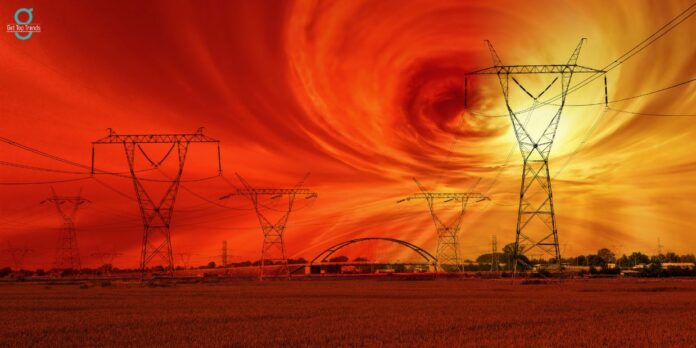Recent solar storms of significant intensity have led NASA to issue a warning regarding the vulnerability of satellites in space. Read more.
These powerful solar winds have caused the Earth’s thermosphere, the second-highest layer of the atmosphere, to reach its highest temperature in nearly two decades, posing a risk to satellites.
A report by Live Science reveals that solar storms, triggered by solar wind and coronal mass ejections from the sun, have substantially raised the temperature of the thermosphere. NASA’s Thermosphere Climate Index (TCI) tracked the temperature increase, which peaked on March 10 at 0.24 terawatts (TW), marking the highest temperature recorded since 2003.
According to the report, this temperature rise can be attributed to a series of geomagnetic storms in January and February. Typically, the thermosphere cools down after a storm due to infrared emissions. However, since the storms have persisted, the temperatures have remained elevated, indicating an ongoing warming trend.

Scientists predict that the next solar maximum, a period of heightened solar activity, will occur in 2025, further confirming the continuous warming of the thermosphere. This warming trend increases aerodynamic drag on spacecraft, bringing them closer to the planet and raising the risk of collisions or unstable orbits.
Satellite operators are adjusting their orbits to mitigate these risks, but the unpredictable nature of space weather makes it challenging to predict these maneuvers accurately. Additionally, recent research suggests that the solar activity peak may happen earlier than initially anticipated, potentially amplifying the danger of satellite disasters, as reported by HT Tech.
While the short-term warming of the thermosphere is a cause for concern, studies indicate that over longer timescales, its temperatures are declining due to the excessive presence of carbon dioxide (CO2) caused by climate change. The additional CO2 leads to cooling due to increased infrared emissions into space.
The recent temperature spike in the Earth’s thermosphere triggered by solar storms has raised concerns about the impact of satellites orbiting our planet. Although temperatures are projected to continue rising in the years ahead, long-term trends suggest a decline due to the effects of climate change.
Must read: Hawaii Volcano Roars Back to Life.


